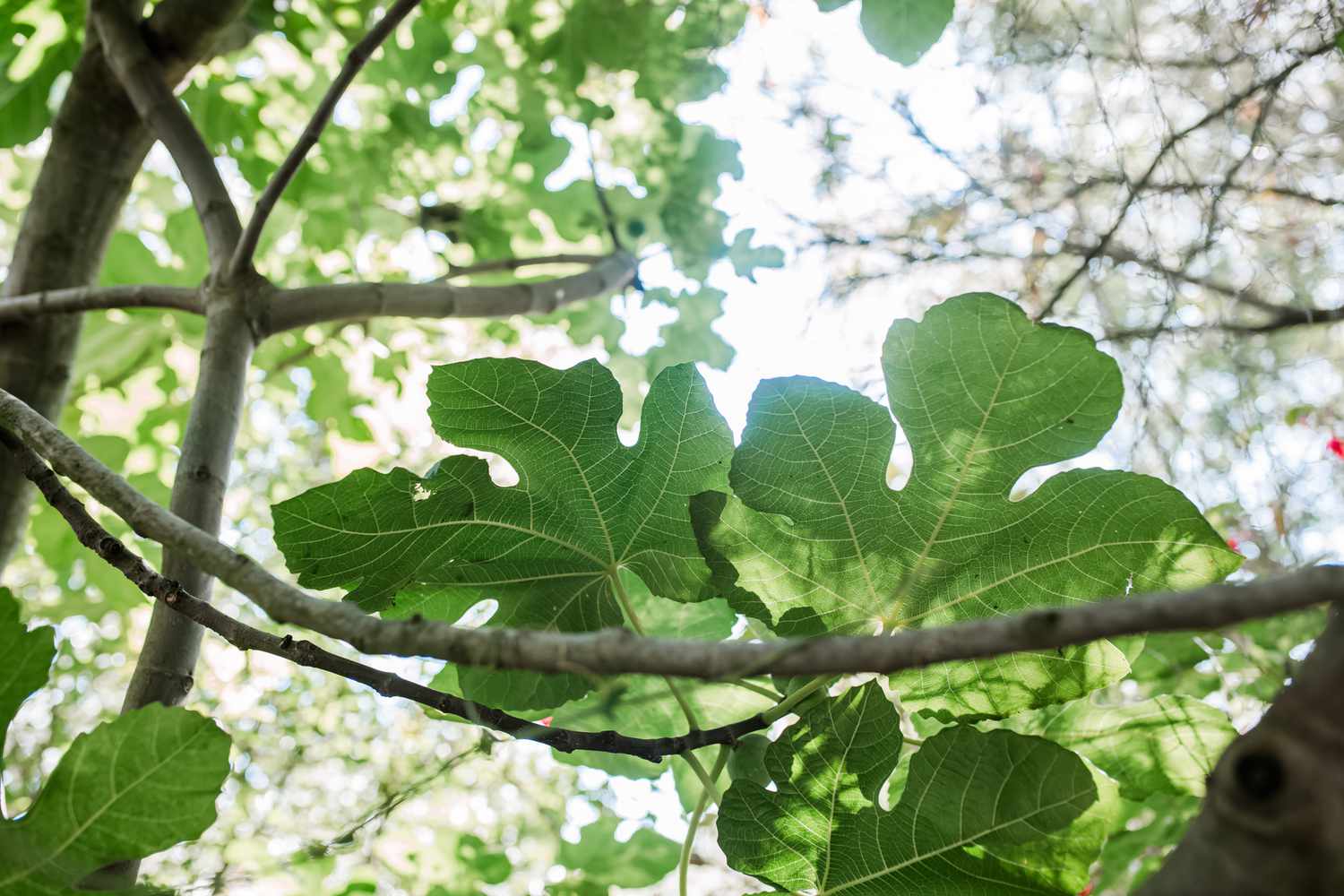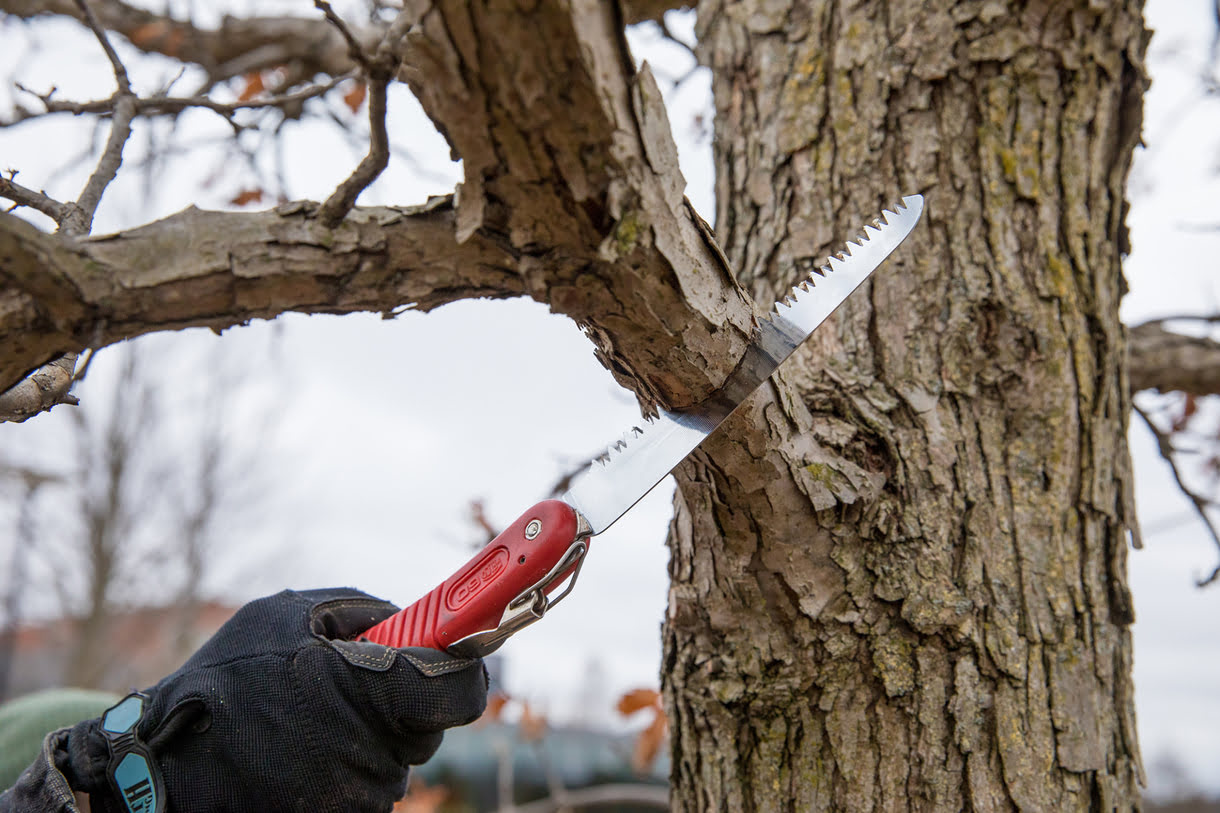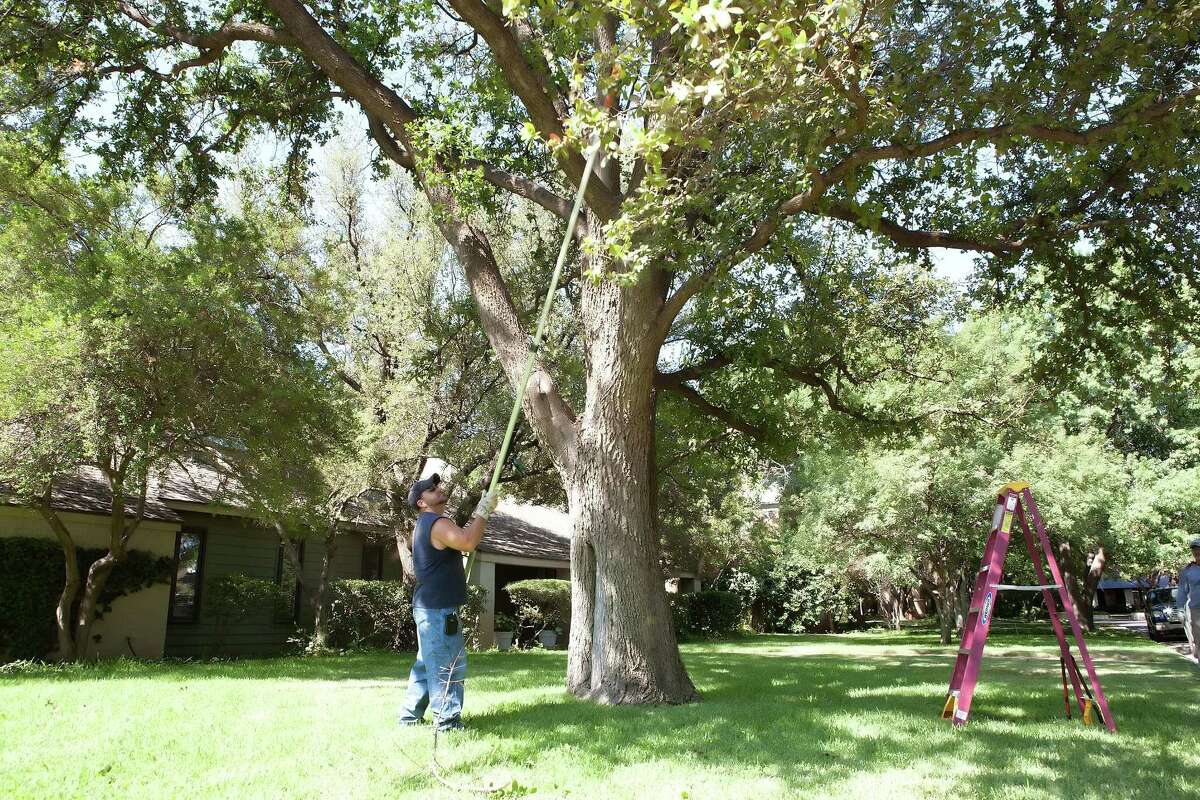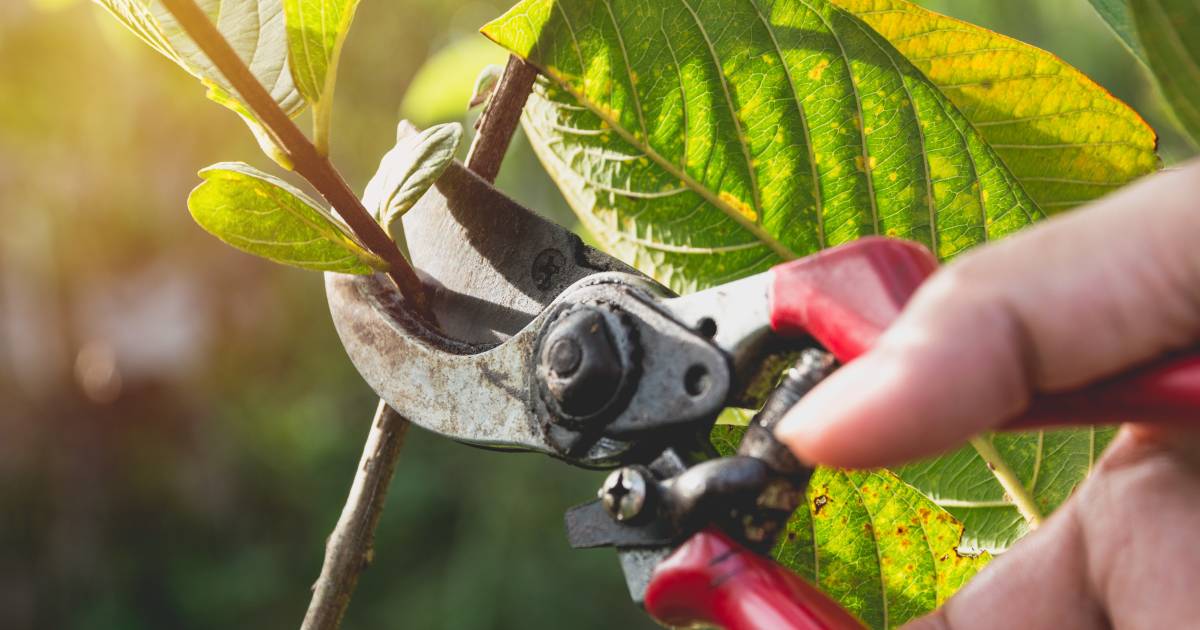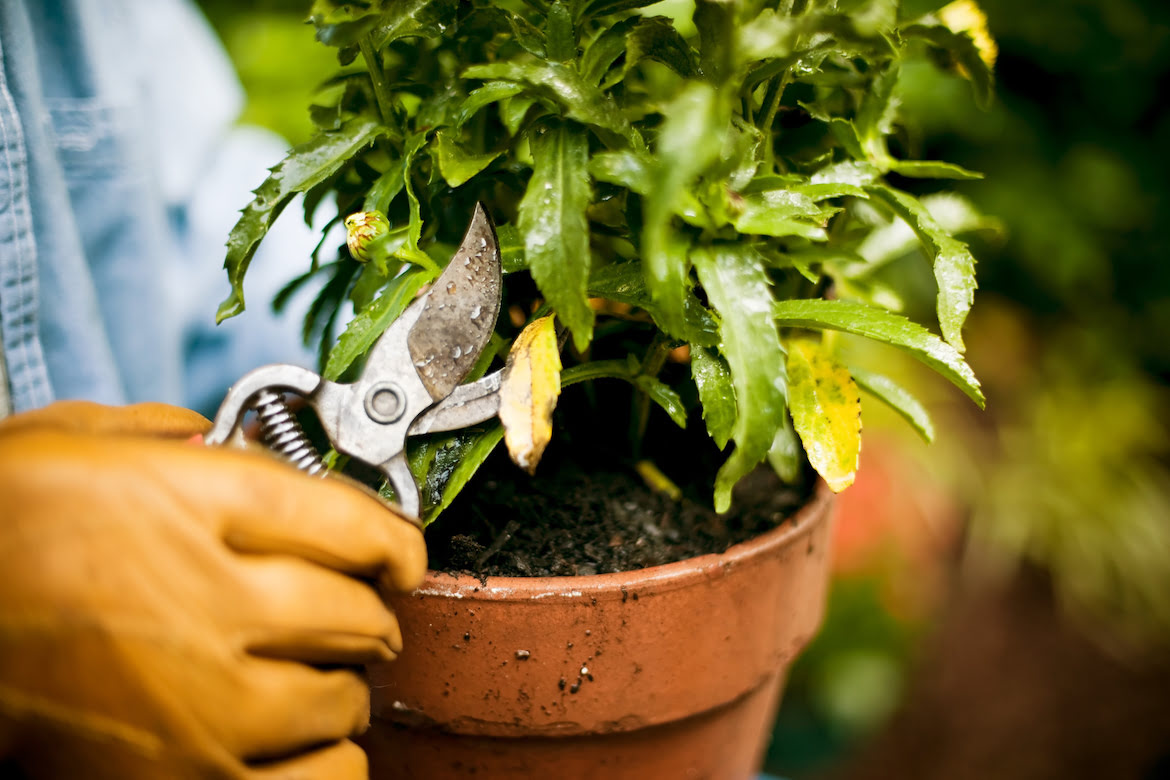Home>Gardening Techniques>Plant Care>When To Prune Apricot Trees
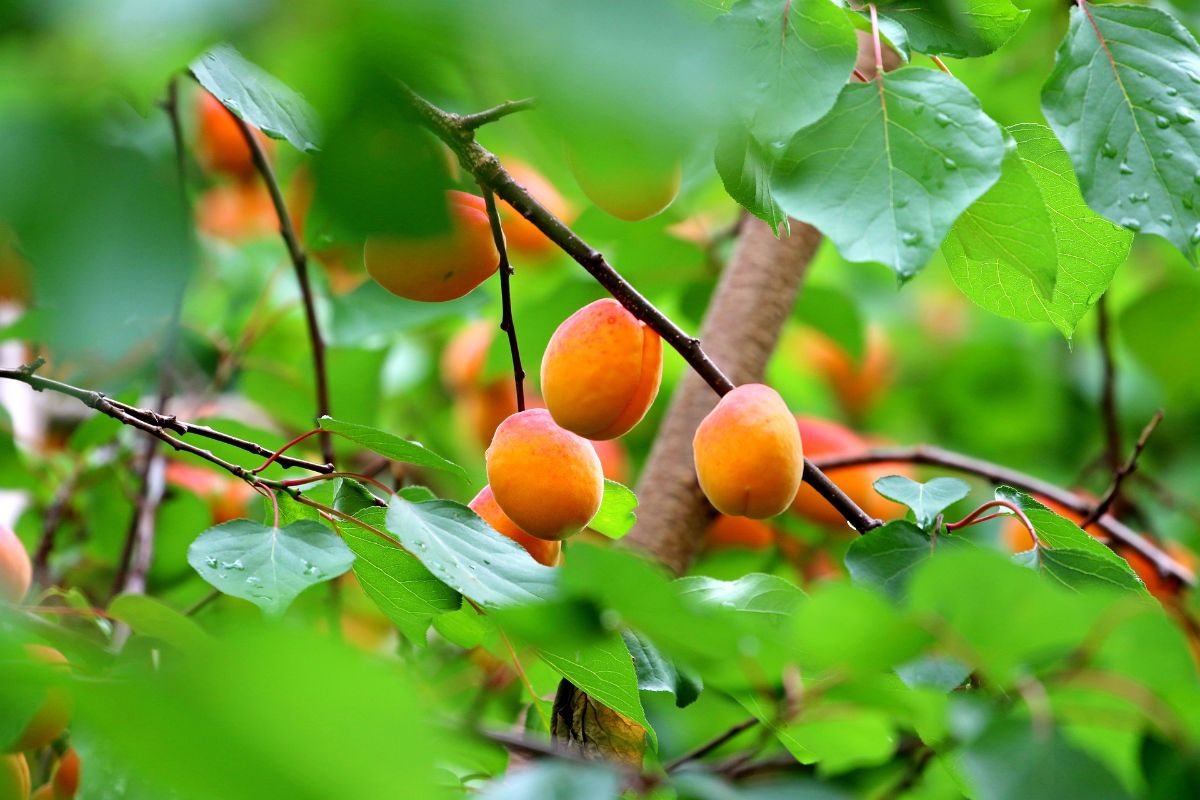

Plant Care
When To Prune Apricot Trees
Modified: January 22, 2024
Learn the best time for pruning apricot trees and essential plant care tips to ensure healthy growth and abundant harvests.
(Many of the links in this article redirect to a specific reviewed product. Your purchase of these products through affiliate links helps to generate commission for Chicagolandgardening.com, at no extra cost. Learn more)
Table of Contents
Introduction
Welcome to the world of apricot tree care! Apricot trees are not only beautiful additions to your garden, but they also provide delicious and nutritious fruits. However, to ensure their health and productivity, it is essential to properly care for and maintain these trees. One crucial aspect of apricot tree care is pruning.
Pruning is the process of selectively removing certain branches or parts of a tree to maintain its shape, improve its structure, and stimulate healthy growth. In the case of apricot trees, pruning is particularly important to promote optimal fruit production and prevent disease.
Understanding when and how to prune apricot trees can seem overwhelming, especially if you are new to plant care. But fear not! In this article, we will guide you through the art of pruning apricot trees, step by step, to help you achieve stunning results in your garden.
Whether your apricot tree is already mature or you’ve just planted a new sapling, this article will provide you with valuable insights and practical tips on when to prune apricot trees, the benefits of pruning, factors to consider, pruning techniques, and common mistakes to avoid. By the end of this article, you’ll be equipped with the knowledge to nurture your apricot tree and enjoy a bountiful harvest season after season.
So, grab your gardening tools and let’s dive in!
Understanding Apricot Trees
Before we delve into the art of pruning apricot trees, it’s important to have a basic understanding of these magnificent fruit-bearing plants. Apricot trees belong to the Prunus family and are native to various parts of Asia and the Mediterranean region. They are classified as deciduous trees, meaning they shed their leaves during the winter months.
Apricot trees generally reach heights of 15 to 25 feet, with a spread of about 12 to 20 feet, making them ideal for medium to large gardens. They are known for their attractive, oval-shaped leaves that emerge a vibrant green in spring, turn dark green in summer, and transform into stunning shades of gold and orange in the fall.
When it comes to apricot tree cultivation, they thrive in temperate climates with moderate winters and relatively dry summers. They require full sun exposure for at least six hours a day to ensure optimal growth and fruit production. Adequate air circulation is also essential to prevent the development of diseases, so it’s important to space your apricot trees adequately.
Apricot trees are self-fertile, which means they can bear fruit without cross-pollination. However, having more than one tree for cross-pollination can increase fruit yield and quality. The trees typically start bearing fruit after three to four years, and with proper care, they can produce abundant harvests for up to 20 years.
Aside from their beautiful appearance, apricot trees are revered for their delicious and nutritious fruits. Apricots are small, golden-orange fruits with a sweet and slightly tangy flavor. They are packed with essential vitamins and minerals, including vitamin A, vitamin C, potassium, and dietary fiber.
Now that we have a better understanding of apricot trees, let’s explore the benefits of pruning and why it is crucial for the health and productivity of these magnificent trees.
Benefits of Pruning Apricot Trees
Pruning apricot trees offers numerous benefits that contribute to the overall health and productivity of the tree. Let’s explore some of the key advantages:
- Promotes optimal fruit production: Pruning helps to stimulate the growth of new branches, which are responsible for bearing fruit. By selectively removing older, unproductive branches, you allow more sunlight and airflow to reach the younger branches, enhancing fruit production.
- Improves tree structure: Over time, apricot trees can develop weak or crowded branches that are more prone to diseases and breakage. Pruning helps to eliminate these issues by removing dead or damaged branches, creating a stronger and more stable structure for the tree.
- Enhances fruit quality: Pruning allows for better fruit distribution throughout the tree, ensuring that each apricot receives adequate sunlight and nutrients. This results in more uniform fruit size, color, and flavor.
- Controls tree size: Apricot trees have the potential to grow quite large, which may not be ideal for smaller gardens. Regular pruning can help to control the tree’s size and shape, making it more manageable and aesthetically pleasing.
- Prevents and manages diseases: Pruning plays a crucial role in disease prevention by reducing the risk of infections caused by fungal pathogens. By removing infected or diseased branches, you minimize the spread of diseases and increase the overall health of the tree.
- Encourages rejuvenation: As apricot trees age, their productivity may decline. Pruning can help to rejuvenate older trees by promoting new growth and refreshing the tree’s overall vigor and health.
With these benefits in mind, it is clear that regular pruning is essential for the long-term success of apricot trees. However, it’s important to consider a few factors before grabbing your pruning tools. Let’s explore what you need to keep in mind before you start pruning your apricot tree.
Factors to Consider Before Pruning
Before you begin pruning your apricot tree, there are several important factors to consider. These factors will help ensure that you make the right decisions and achieve the best results:
- Timing: Pruning apricot trees at the wrong time can have detrimental effects on their health and fruit production. It is crucial to prune during the dormant season, typically in late winter or early spring, before bud break. Pruning during this time allows the tree to recover and heal wounds before new growth begins.
- Age of the tree: The age of your apricot tree is another important consideration. Young trees require less pruning than mature ones. Focus on shaping and training young trees through selective pruning, while older trees may require more extensive pruning to remove dead or overcrowded branches and rejuvenate growth.
- Tree growth habit: Understanding the natural growth habit of your apricot tree is crucial for effective pruning. Some apricot tree varieties have a more upright growth habit, while others may have a spreading or weeping habit. Adjust your pruning techniques accordingly to maintain the desired shape and structure of the tree.
- Weather conditions: It is important to take into account the weather conditions when planning your pruning. Avoid pruning during periods of frost or extreme cold, as it can damage the tree. It’s best to prune when the weather is dry, allowing the wounds to heal quickly and minimizing the risk of diseases.
- Health of the tree: Assess the overall health of your apricot tree before pruning. If the tree is weakened due to disease, pest infestation, or environmental stress, it’s best to address these issues before pruning. Pruning a severely unhealthy tree may further weaken it and hinder its ability to recover.
- Tools and techniques: Ensure you have the proper tools for pruning, such as sharp bypass pruners, loppers, and a pruning saw for thicker branches. Familiarize yourself with proper pruning techniques, such as making clean cuts just outside the branch collar and avoiding leaving stubs. Using the right tools and techniques will minimize damage and promote proper healing.
By considering these factors, you can approach the pruning process with confidence and make informed decisions that will benefit the long-term health and productivity of your apricot tree. Now, let’s move on to the exciting part – determining the best time to prune your apricot tree!
When to Prune Apricot Trees
Timing is crucial when it comes to pruning apricot trees. Pruning at the wrong time can result in reduced fruit production, susceptibility to diseases, and overall tree stress. The best time to prune apricot trees is during the dormant season, which typically falls in late winter or early spring before the buds start to break.
Pruning during the dormant season offers several advantages. First, the absence of leaves makes it easier to assess the structure of the tree and identify areas that need attention. Second, the tree’s energy is concentrated in the root system during dormancy, providing an opportunity for the tree to heal wounds more efficiently.
Scheduling your apricot tree pruning in late winter or early spring ensures that the tree has ample time to recover and initiate new growth before the arrival of the growing season. Aim to prune your apricot tree just before the buds begin to swell but are still dormant.
Keep in mind that pruned branches release chemical signals that stimulate new growth. Pruning too early in the dormant season can result in premature growth that may be vulnerable to late frosts or freezes. On the other hand, pruning too late in the season can reduce the number of blossoms and ultimately impact fruit yield.
If you live in regions with mild winters or areas where late frost or freeze is a concern, it’s advisable to wait until the coldest part of winter has passed before pruning. Monitor the weather forecasts and make sure there is no risk of extreme cold or frost in the coming weeks.
It’s important to note that apricot trees have a tendency to produce gum or sap when pruned during the dormant season. This is a natural defense mechanism of the tree, and while it might appear concerning, it is usually harmless. The sap will stop flowing as the tree heals, so there’s no need to be alarmed by this occurrence.
By pruning your apricot trees during the right time of year, you set the stage for optimal growth, fruit production, and overall tree health. In the next section, we’ll explore different pruning techniques that can be applied to your apricot tree.
Pruning Techniques for Apricot Trees
Pruning apricot trees involves different techniques that help maintain their shape, structure, and productivity. Here are some essential pruning techniques to consider when caring for your apricot tree:
- Thinning: Thinning involves selectively removing entire branches from the tree. This technique helps improve airflow, light penetration, and reduces overcrowding, which can lead to disease development. When thinning, focus on removing weak, dead, or diseased branches, as well as any crossing or rubbing branches.
- Heading Back: Heading back is the process of shortening the length of branches. By pruning back branches to a lateral bud or a side shoot, you stimulate new growth and encourage branching. This technique is useful for shaping the overall structure of the tree and maintaining its size.
- Pruning Cuts: When making pruning cuts, it is important to follow proper techniques. Make clean cuts just outside the branch collar, which is the swollen area where the branch connects to the trunk or another branch. Avoid leaving stubs, as they can lead to disease entry and inhibit proper healing.
- Training: Training a young apricot tree involves guiding its growth and shaping it into the desired form. This includes the removal of competing leaders, which are the main vertical branches, and encouraging the growth of lateral branches at desirable angles. Training helps create a well-balanced tree structure with strong, evenly spaced branches.
- Renewal Pruning: Over time, apricot trees can become unproductive or develop branches that are older and less productive. Renewal pruning involves removing these older branches to stimulate new growth and rejuvenate the tree. It is often done by removing one or two of the oldest branches each year, gradually replacing them with young, vigorous branches.
Remember that pruning should be done with the long-term health and structure of the apricot tree in mind. It’s important to avoid excessive pruning, as this can stress the tree and reduce fruit production. Aim to maintain a balance between removing unproductive or problematic branches and preserving the overall shape and structure of the tree.
While these pruning techniques provide a solid foundation, it’s important to adapt them based on your specific apricot tree’s growth habit, size, and condition. Observing the tree’s response to pruning and making adjustments accordingly will help you achieve the best results.
In the next section, we’ll explore some common pruning mistakes to avoid to ensure the success of your apricot tree care.
Common Pruning Mistakes to Avoid
Pruning is an essential aspect of apricot tree care, but it’s important to be aware of common mistakes that can hinder the health and productivity of your tree. By avoiding these mistakes, you can ensure optimal results and maintain the vitality of your apricot tree:
- Over-pruning: One of the most common mistakes is over-pruning. Removing too many branches at once can stress the tree and reduce its ability to produce fruit. Always aim to strike a balance between maintaining the tree’s shape and structure and preserving its overall health.
- Pruning at the wrong time: Pruning at the wrong time of year can have negative consequences. Avoid pruning during the active growing season, as this can disrupt the tree’s growth and fruit development. Stick to pruning during the dormant season, preferably in late winter or early spring.
- Using poor pruning tools: Using dull or improper pruning tools can lead to ragged cuts that take longer to heal. Ensure your pruning tools are sharp and clean to make clean cuts that reduce the risk of disease entry. Bypass pruners, loppers, and pruning saws are among the essential tools for effective pruning.
- Disregarding the tree’s growth habit: Each apricot tree has its own unique growth habit, and it’s important to take this into consideration when pruning. Understanding the natural growth pattern of your tree will help you make appropriate cuts and shape it effectively.
- Pruning during extreme weather: Pruning during extreme weather conditions, such as during freezing temperatures or during a heatwave, can harm the tree. Opt for pruning during dry, mild weather to allow the wounds to heal properly and minimize stress on the tree.
- Not properly caring for pruning wounds: After pruning, it’s crucial to care for the wounds to minimize the risk of disease. Avoid applying tree paint or wound sealers, as they can trap moisture and hinder healing. Instead, allow the wounds to heal naturally and monitor them for any signs of infection.
- Ignoring the tree’s overall health: Pruning unhealthy trees can further weaken them. It’s important to address any existing health issues, such as pest infestations or diseases, before pruning. Taking care of the tree’s overall health will ensure better outcomes and faster recovery.
By being mindful of these common pruning mistakes, you can approach apricot tree care with confidence and promote the long-term health and productivity of your tree. With the right techniques and proper care, your apricot tree will reward you with a bountiful harvest season after season.
Now that we’ve explored the key aspects of pruning apricot trees, let’s recap the important points and conclude our guide to apricot tree care.
Conclusion
Caring for apricot trees involves various aspects, and pruning is a crucial component of their maintenance. By following the proper techniques and considering important factors, you can enhance the health, structure, and fruit production of your apricot tree.
Understanding the ideal time to prune is essential. Prune your apricot tree during the dormant season, preferably in late winter or early spring, ensuring you avoid extremes of weather and frost. This timing allows for optimal healing and recovery, setting the stage for robust growth and abundant fruit production.
When pruning, use effective techniques such as thinning, heading back, and renewal pruning. These techniques help maintain the shape and structure of the tree, improve light and air circulation, and rejuvenate older branches for continuous productivity.
Avoid common pruning mistakes, like over-pruning, pruning at the wrong time, or using improper tools. Carefully consider the tree’s growth habit, weather conditions, and overall health to make informed pruning decisions.
By taking these steps, you can ensure a healthy and productive apricot tree in your garden. Remember to monitor the tree’s response to pruning, make adjustments as needed, and provide ongoing care to support its growth and development.
Now that you are equipped with the knowledge of apricot tree care and pruning, it’s time to put it into practice. Enjoy the process of nurturing your apricot tree, and savor the sweet rewards of your efforts when you harvest delicious apricots from your own backyard.
Happy pruning!
